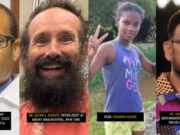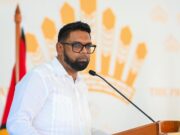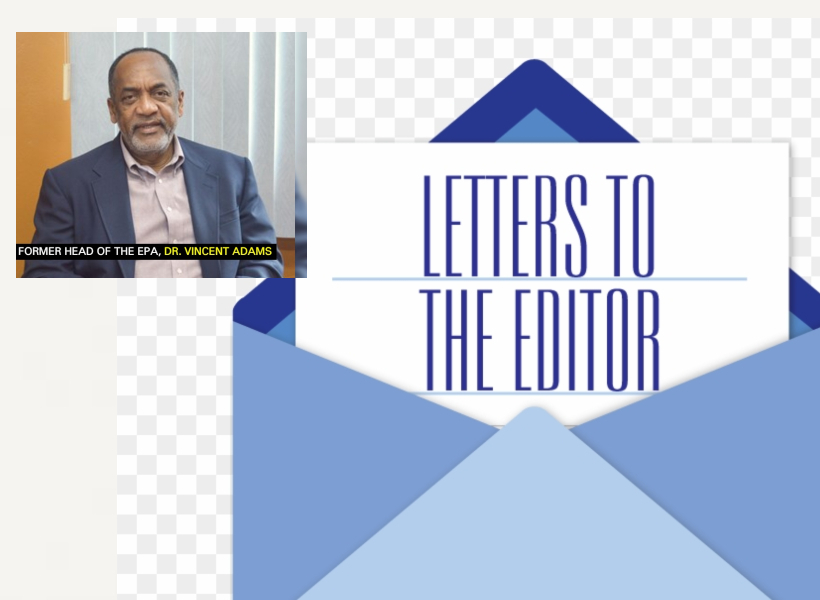Dear Editor,
I have followed with deep interest, the recent warranted upsurge in public outcry from experts and affected populations of all walks of life in Guyana, the Region, and other international communities calling for full insurance coverage in the event of an oil spill.
However, there appears to be some confusion, misinformation, and missing facts in the narratives as to why we happen to be in this dreadful situation of not having any such protection to safeguard the nation’s environmental, health and economic wellbeing; hence, I feel obligated to let the people of Guyana know the facts that led to this dilemma.
As readers may recall being extensively covered by the news media, acquisition of full liability coverage was EPA’s bone of contention with Exxon, during my short 22-month tenure as Head of the EPA from October 2018 to August 2020.
The most pivotal fact is that after very stiff resistance, Exxon did indeed agree in writing, to have full liability coverage, and we were close to celebrating ‘mission accomplished’ when at the last moment in August 2020, defeat was snatched from the jaws of victory by the incoming PPPC Government, when they inexplicably, stopped finalization of the EPA/Exxon Agreement to realize this full liability coverage.
Furthermore, they found it convenient to part ways with the EPA Attorney handling the Agreement – a young and most brilliant Guyanese Attorney whom I would rank amongst the top international Attorneys of his peers with whom I worked and supervised. The Government must explain to its people why it so callously stopped finalization of the Agreement with Exxon, thus reducing us from the agreed upon full coverage to no coverage.
Here is a chronology of events that led to this point:
The Liza 1 project was the first to be granted an oil & gas Permit by EPA, and it was signed in June 2017, by Mr. Kemraj Parsram, the current Government appointed EPA Head who was Acting in that position prior to my period of service. In all fairness, Mr. Parsram may have signed the Permit based upon the “self-insurance” allowed by the 2016 Petroleum Agreement (The Contract) between the Coalition Government and Permit Holder EEPGL (subsidiary of ExxonMobil and operator of the oil & gas projects under parent companies ExxonMobil, Hess, and CNOOC). Self-insurance means that EEPGL would bear all financial liabilities; so, is exempt from having to obtain any outside insurance. However, the snag in this deal is that EEPGL as a newly formed limited liability company, did not, and does not, have any assets to cover any such liabilities.
Upon my becoming Head of EPA, it was made clear to Exxon that we will correct the existing flaws of the Liza 1 Permit, incorporate corrections into the Liza 2 and all subsequent Permits, and not issue the Liza 2 Permit until full liability coverage is guaranteed. After several months of push backs, Exxon gave in to our demand for full coverage, and obtained the highest insurance available on the market, to the value of $2.5 Billion USD, proclaiming it to be adequate coverage. We vehemently disagreed and pointed out that BP’s Macondo spill in the Gulf of Mexico was costing approximately $70 Billion USD; and that such a liability would bankrupt Guyana, not to mention potential law suits from neighboring countries and other affected parties. Consequently, we demanded that the parent companies ExxonMobil, Hess and CNOOC, cover all liability costs over and above the $2.5 Billion insurance.
During these most tense discussions, Exxon expressed that coverage by parent companies is totally unnecessary, since Exxon is, after-all Exxon, and will never walk away. Of course, we quickly seized upon the opportunity to retort that with such an avowal, there should be no problem for them to put it in writing. That ended the argument! and Exxon eventually acceded to our immovable demand for parent companies cover above the $2.5 Billion insurance; but asked that we sign the Liza 2 Permit, so as to maintain confidence in their investors, while affording time for the parent companies to agree upon how they will share the liabilities.
Exxon’s request was deemed an easy no-risk concession, since the Liza 2 start-up was not scheduled until three years hence in 2022, and couldn’t start anyway without the Agreement. Therefore, we issued the Liza 2 Permit in mid – 2019, requiring full coverage to be carried by a combination of the $2.5 Billion insurance, with all of the remainder to be carried by EEPGL’s parent companies. It also required that full coverage guarantee must be in place, prior to start of the Liza 2 production. This requirement became the standard language in all subsequent Permits issued to EEPGL and other operators. Further, and most importantly, we signaled to Exxon that the upcoming Payara Permit for the third project will not be granted until the Agreement guaranteeing this full liability coverage is in place.
EPA’s success at getting Exxon to consent to full liability coverage, received wide media attention due to the fact that this departed from The Contract which allows for only self-insurance from EEPGL. Along the same lines, the EPA was also able to attain unfettered any-time access including unannounced visits to the operating facilities, thus again departing from the 7-day notice required in The Contract deemed to be sacrosanct as the reason used by both Governments for not pursuing re-negotiations. The bafflement was that if the EPA can deviate from The Contract, why can’t the Government also re-negotiate for changes.
Subsequent to issuance of the Liza 2 Permit, regular meetings were held for several months, between Attorneys of EPA and parent companies to arrive at the Agreement as to how the parent companies would share the full coverage. This Agreement was nearing finalization when my service was terminated along with the ongoing meetings to finalize the Agreement, followed by the removal of the EPA Attorney handling the matter. My termination occurred in August 2020, and lo and behold, the Payara Permit was granted the very next month of September 2020, without the agreed upon full coverage. Additionally, the Honorable Vice President has stated that the EPA is now seeking $2 Billion worth of insurance. Does this mean that the Government has now allowed Exxon to drop the $2.5 Billion USD insurance that we had secured and supposed to be permanent per written obligations from Exxon? As protector of the nation’s economy, environment and health, the Government owes it to its people, to explain why it has taken such a dangerous step in taking the country from agreed upon full liability coverage to no coverage.
The extraordinary rapid increase in operations over the next few years, even so welcomed, would bring with it, a corresponding significantly increased risk of an oil spill – a very frightening scenario, considering (1) the gross inadequacy of the Government’s oil spill Emergency Response Plan which I refused to sign, due to documented justifiable reasons; and (2) the Environmental Impact Assessments (EIAs) showing that a major spill could be just as devastating, or worse than the BP Macondo spill, with oil washing away the Caribbean beaches and their economies all the way to the Jamaica, resulting in Guyana’s and its neighboring countries environmental destruction, obliteration of the fishing industry, and economic bankruptcy including possible law suits from neighboring countries and other affected parties.
The recent Opposition’s Motion is welcomed in calling for the Government to recant its decision to stop the finalization of the full coverage Agreement already agreed upon by Exxon; and in pledging of its support to the Government in what must be the unrelenting pursuit of full liability coverage. In the meantime, the Government owes it to its people, to explain why it took such a dangerous step in taking the country from agreed upon full liability coverage to no coverage.
Yours respectfully,
Dr. Vincent Adams













